- Home
- Lisa Wingate
Good Hope Road Page 31
Good Hope Road Read online
Page 31
“Well, I darned near had another heart attack when I heard you were talking about going away to medical school.” He grinned, poking me playfully in the shoulder. “All these years I been trying to get you to go to vet school, and in three days some outsider steals you away. How is that fair?”
“Sorry.” I chuckled. “Anyway, you never know. I may be back. This medical school thing may not work out.”
Doc shook his head as if he knew otherwise. “You’ll be fine. You just do your best, and you’ll be fine.” He pointed a finger at me. “But if you ever get lonely up there in that big city, you give a me call. I’ll be here.”
“You’d better be.” I meant it. “You take care of yourself, all right? No more big adventures.”
“Let’s hope not.” He glanced around the room as if he’d suddenly remembered something. “Well, I’d better get home for lunch before Mrs. Howard comes after me with a dog collar. I’ll stop out at your place later on and check on you.”
“You don’t have to do that, Doc.” The thought of people dropping by our house still seemed strange.
He patted me on the head the way he used to when I was a kid working for him. “I know I don’t, but I will.”
I followed him out the door and climbed into Drew’s truck. A sense of peace and renewal filled me as I left the armory and drove toward home. For the first time in my life, I turned down Good Hope Road feeling as though I belonged there.
The gate was open as I passed Mr. Jaans’s place. I pulled into the driveway and coasted up to the yard fence, where the Gibsons’ car was parked. The door of the house opened, and Mrs. Gibson appeared with a broom, sweeping a cloud of dust out the door.
She saw me and set the broom aside, hurrying down the steps to open the gate.
“Oh, Jenilee!” she cried, reaching for me as I climbed out of the truck. “I’ve been wondering about you all day, and now here you are.”
I stretched my arms out and slipped them around her ample body, smelling the scent of vanilla and freshly baked bread. For a moment I thought of my own grandmother.
We held each other for a long time. Finally she released me and stepped back, her face growing serious. “How’s your father?”
I wondered how to answer the question. “He’s out of surgery. I guess the rest is up to God.”
Mrs. Gibson smiled. “It really all is, anyway.”
“Eudora!” I heard Mr. Jaans’s voice from inside. “Someone’s got to help me out of this blamed bathtub. I’m stuck in here.”
“Just a minute!” she hollered, then turned back to me and blushed. “Someone’s got to look after the old fool.” She chuckled sheepishly; then she called over her shoulder, “Just sit in there and soak awhile. It’ll do ya some good.”
I laughed under my breath, then remembered something. “I brought you something.” I hurried to the truck and returned with the stack of notebooks.
Her eyes widened and brimmed with tears. “My notebooks,” she breathed, taking them from me.
“I found them in your cellar. I guess you forgot you took them down there.”
“I guess so.” She shrugged, as if it didn’t matter anymore. “Next time my house is about to be blowed away by a tornado, I’ll have to stop and make myself some notes about where I’m leavin’ things.”
We chuckled, and Mr. Jaans hollered again from inside. “Good Lord, woman, I’m shrivelin’ up like a prune in here!”
Mrs. Gibson blushed again. “That man.” She rolled her eyes, looking exasperated. “I suppose I better go tend to him.” She set the notebooks on the corner of the porch, then turned back to me. “Dr. Albright is sending them internship forms to Doc Howard’s office for you. I want you to promise me you’re going to fill them out.”
“I am,” I said, knowing she was asking about more than just the forms.
She touched the side of my face, her eyes filled with a love that warmed every part of me. “Then some good will come of all this.”
I laid my hand over hers, thinking of everything that had changed the moment the wind blew us together. “A lot of good came of it.”
“You go on home. I’m going to get this old man out of the bathtub,” she said, lowering her hand. “I’ll be down to your place in a little while with some supper. We can sit and talk.”
“That sounds good. I have so much to tell you.” I turned to leave, comfort settling over me like an old quilt. “I have your stained-glass window at home. Drew saved it for you.”
“My dove?” she cried. “I thought it was ruined. I saw it in the dirt.”
“Some of the glass needs to be replaced, but the dove is still there.”
“Oh, Jenilee, what would I do without you?” She clapped her hands together, turned, and hobbled up the stairs. “My Lord, who knew everything would work out like this.”
Who knew everything would work out like this? I thought as I climbed into the truck and drove away. Who knew?
A dust devil crossed the road in front of me as I drew close to home. I stopped to watch it pass as it lifted bits of paper from the grass in our pasture, swirling them high into the air, like butterflies in a spring dance, until finally they fell free and floated to earth again, landing on the lawn of my grandparents’ old house.
I pulled the truck onto the side of the road and climbed out, squinting at the papers through the heat waves of the afternoon sun. Watching them flutter in the breeze, I slipped through the fence and moved closer, wondering if maybe …
My feet moved faster, until I was dashing through the grass, leaping over stands of milkweed and black-eyed Susans as I had as a child, rushing toward a place that was quiet and safe. As I came to the yard, I saw them all around me. Letters. Letters of every size and shape, on aging bits of paper of every color, spilling from what remained of the old white house, covering the grass, intertwining with the flowers.
I knew the handwriting without touching them. I stood, just looking, just listening to the low rustle of their voices. My grandparents’ voices. A part of what I was. The best part. The part that hoped, and loved, and believed, and belonged to a family.
I moved to the decaying wooden swing, still hanging from the elm tree near the tumbledown porch. Sitting carefully on the edge, I untangled a piece of plain brown paper from the wooden slats. Brittle with age, it had once been torn from a sack of feed or flour. I turned it slowly in my hands, touching the neat rows of cursive writing that seemed too fine for the carelessly torn scrap.
Today, I harvested fruit from the vines we planted. I stand now in my kitchen, washing the fruit as I gaze out the window. In the field, I can see you with the horses among a sea of Queen Anne’s lace, bathed in the summer sunshine, lifting our amber-haired daughter high on your shoulders. I want to tell you that there has never been a better moment in my life than this simple, quiet one, but you are too far away to hear me, so I will write this little note to you. Today as I harvested, I saw a moth in a cocoon among the vines. All day as I worked, it labored to break free. If not for something you told me once, I would have helped it to come more easily into this world. But because of you, I know. I know that even the struggle is a gift. It is God’s way of giving a simple creature of the earth the strength to fly.
I am in awe of God and His wonders.
Your beloved,
Augustine Hope
Looking across the grass, I imagined a cloud of Queen Anne’s lace, imagined my grandfather there among the horses. I imagined that he was smiling at me, as I sat there among those letters, so long trapped in that silent house, now set free by the wind.
Lisa Wingate lives on a horse ranch in the Texas hill country with her husband and two young sons. She was raised in Oklahoma and is a graduate of Oklahoma State University. She began writing books at the age of five, with The Story of A Dog Named Frisky, “published” with manila paper and a stapler and sold exclusively to grandparents. Since that time, she has continued her lifelong love of writing.
More information about
Lisa Wingate and her upcoming projects can be found on her Web site at www.LisaWingate.com.
A CONVERSATION WITH LISA WINGATE
Q. Good Hope Road deals with the effects of a disaster on a community. How much of the book was inspired by the events of September 11, 2001?
A. The answer is twofold. I began writing Good Hope Road long before September 11. The book was originally inspired by a devastating tornado that swept through Oklahoma City the day after I had been there speaking at a conference and visiting friends. When I saw coverage of the tornado on the news, I kept thinking, “Dear God, we were just there.” My husband and I started trying to call friends and loved ones, but the phone lines were down. As we watched the TV coverage, trying to discern which areas had been hit, the stories about the community banding together gave us a sense of hope. There were so many powerful images, but one in particular stayed with me—that of a girl pulling photographs from the debris near a rural home and saying she didn’t know who they belonged to, that they might have been carried from miles away. It was probably only a minute or two of news footage, but it haunted me. Inspired by that image, I began writing Jenilee’s story.
By September 11, the manuscript was completed, and I was about to begin revisions. That September morning, the book took on a completely new meaning for me. In the wake of those horrible events, during those few days when we didn’t know what might happen next, I needed to believe that the human spirit, that a community of people, could overcome even the worst tragedy. I wanted to create a book that would celebrate the best in human nature and the ability of good to triumph over destructive forces.
Q. Why do you choose to write books in the first-person point of view?
A. I like the closeness to the character that first-person point of view provides. I like the feeling that you’re hearing a real person, not a third-person narrator, tell a story. I often get so wrapped up in the characters and their stories that I forget they aren’t real people living out their lives somewhere. First-person point of view doesn’t work for every story, but for many of my stories it helps create the impression of a personal narrative being told to the reader (and actually, to the writer) in a very intimate one-on-one fashion.
Q. How much of the book is inspired by your own experience?
A. Well, I grew up in Tornado Alley in northern Oklahoma, so from an early age, I knew about tornadoes and the need to run to the “ ’fraidy hole” when funnel clouds were reported on the news. I’ve gotten close to a tornado or two, but I’ve never actually been in one, and I’d like to keep it that way.
The characters of Eudora Gibson and Jenilee Lane are composites of people I have known, and the town of Poetry could be any small town—its people old-fashioned, stuck in their ways, sometimes critical and stubborn, yet beneath their gruff exterior, filled with compassion and determination.
Like the people of Oklahoma City and New York City, the people of Poetry rise to the occasion when challenged. I hope that their triumph will leave readers feeling uplifted. It is always my intention, my desire to write stories in which characters grow to a fuller understanding of their world, themselves, and their spirituality. I like stories that end happily, and even though happy endings are sometimes criticized as being “pat” or unrealistic, that is where my heart goes as a writer, as a reader, and as a human being. I want to believe that all things are possible, in writing and in life.
Q. Good Hope Road deals with many important themes. Which ones do you hope will generate the most discussion?
A. The important issues in Good Hope Road are those that the characters struggle with during the days after the tornado—the need for the support of family and community, the need of every individual to be accepted and valued, the need to leave the past behind to move toward the future. The novel also explores the idea that God brings together people who can learn from one another, the difficulty of escaping marital and family abuse, the ability of faith to sustain people through difficult times, and how struggle can bring out both the best and the worst in individuals and in communities.
Q. When you speak to readers, via personal appearances and e-mail, what questions do they most commonly ask?
A. First, they want to know whether future stories will revisit the family in my first novel, Tending Roses. The answer is yes. The characters from Tending Roses make a brief appearance in Good Hope Road and are connected to Jenilee and her family through Jenilee’s grandmother, Angeline, and her sister, Rose, the grandmother in Tending Roses. In the future I would like to investigate the past relationship between Rose and Angeline and explore what caused the family rift that has separated the descendants.
Readers also ask where I get my story ideas. I have to confess that ideas can come from almost anywhere. In Good Hope Road, the impetus was a flash of news footage. Tending Roses was inspired by my relationship with my grandmother and the life lessons she shared with me when I became a mother. I found the germ of an idea for Texas Cooking, which NAL will publish in the fall of 2003, in a conversation with my husband about the old-fashioned wit and wisdom found in the small-town cafés of central Texas. The novel I am now writing was first inspired by my family’s move to an area that borders an intersection long called the Crossroads. On one corner is an abandoned store, known as the Crossroads Store, which has a fascinating and colorful history.
People also ask how long I’ve been writing. I always answer, “All of my life,” but I know many writers who began writing very late in life, including a friend of mine who was first published at seventy-five years old. As for myself, I can’t remember a time when I didn’t write. My first grade teacher in Peaslee Elementary, Northboro, Massachusetts, first put into my head the dream of someday writing for a living when she wrote on my report card that she expected to see my name in a magazine one day. From then on, I hoped to write a book that would be published, and that people would read it and in response send a note, a prayer, or simply their good thoughts.
So, as I sit here on the porch writing these words on a quiet summer day in Texas, and as you sit reading them where you are, we are fulfilling a childhood dream, you and I.
QUESTIONS FOR DISCUSSION
1. Good Hope Road describes a community recovering from the destruction caused by a cataclysmic natural event. Have you experienced anything similar in your own life or do you know people who have? How might one’s experience of destruction caused by an act of war, as on September 11, differ from one’s experience of a natural disaster?
2. Although the townspeople have ignored Jenilee’s plight throughout her life, she instinctively comes to the aid of her neighbor, Eudora Gibson, after the storm. On the other hand, at first, Jenilee doesn’t think to bring emergency supplies from home to the center of town. Why does she behave inconsistently in this regard? Is one act instinctual and the other a learned response? Where does the instinct to help come from? Do other characters in the book have it? Do you and the people you know? How does one learn to become a caring member of a community?
3. The storm and the days afterward prove to be important turning points in the lives of Jenilee Lane, Eudora Gibson, and Dr. Albright. Why are these three characters so changed by their experiences? Can you compare their experiences to an important turning point in your own life?
4. Of all the items she finds in the debris, Jenilee is most fascinated by the photographs. Why? What do they symbolize for her? Compare what she does with the photographs to what people in real communities have done with photographs after great tragedies—for example, in Oklahoma City after the bombing of the Federal Building; in Littleton, Colorado, after the school shooting; in New York City after September 11. Why do you think that Jenilee feels, and the people of these real-life communities felt, such a strong need to publicly share those photographs? Discuss the impact of the photographs on the community.
5. At the beginning of Good Hope Road, Jenilee Lane is a young woman whose abusive family situation and limited circumstances have led her to expect very
little from life. By the end of the book, she sees new possibilities for herself. Discuss the specific events in the novel that bring her to a place where she can see beyond the present to a brighter future. Why is her transformation so difficult? Do you know people like Jenilee? What efforts have been made to help them and what have the results been like? Why is it so difficult to change people’s expectations of themselves, and where does our responsibility lie in helping them?
6. For much of the novel, Jenilee is angry at her brother Drew for having left her and their younger brother, Nate, alone to face their abusive father and ill mother. Was Drew wrong to leave the family? In what ways has he both succeeded and failed to overcome the limitations of his upbringing? In what ways are the responses of Jenilee, Drew, and Nate typical of children raised in abusive homes?
7. Don’t read this question if you haven’t already finished the novel. At the end of Good Hope Road, Jenilee’s father is still very ill, but if he recovers from surgery, the expectation is that he will be placed in a veterans’ hospital for long-term care, thus freeing Jenilee and her brothers from his undermining influence. If a facility such as the veterans’ hospital did not exist, what effect might that have on the futures of Jenilee, Drew, and Nate?
8. Many of Eudora Gibson’s problems in life are the result of bitterly held resentments regarding past events. She concludes that God has been letting hardships come to her in order to prod her into “turn(ing) over the reins” of her life. Do you agree with her assessment? Why or why not?
9. Dr. Albright arrives on the scene with an unfriendly, all-business attitude, and shows little concern for his patients as people. How does he change in the course of the novel, and what specific events provoke that change? What changes do you think he intends to make when he returns home? Will he succeed?
10. The story of the moth struggling to escape its cocoon begins and ends the book. Why do you think the author chose to frame the book with this image? Is it effective?

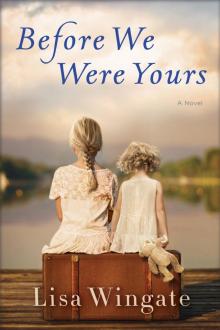 Before We Were Yours
Before We Were Yours A Sandy’s Seashell Shop Christmas
A Sandy’s Seashell Shop Christmas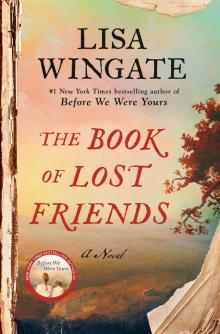 The Book of Lost Friends
The Book of Lost Friends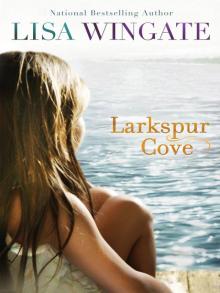 Larkspur Cove
Larkspur Cove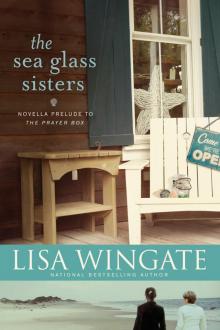 The Sea Glass Sisters
The Sea Glass Sisters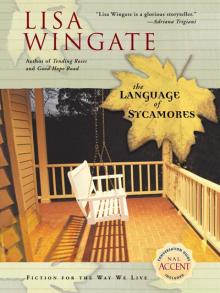 The Language of Sycamores
The Language of Sycamores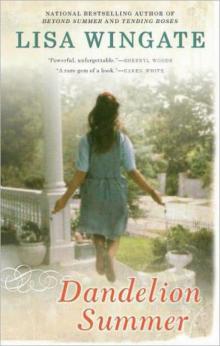 Dandelion Summer
Dandelion Summer Word Gets Around
Word Gets Around Beyond Summer
Beyond Summer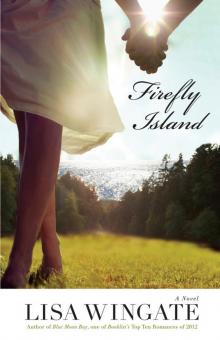 Firefly Island
Firefly Island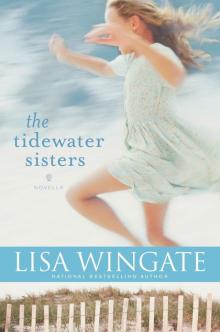 The Tidewater Sisters: Postlude to The Prayer Box
The Tidewater Sisters: Postlude to The Prayer Box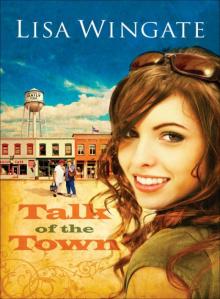 Talk of the Town
Talk of the Town![Blue Sky Hill [01] A Month of Summer Read online](http://i1.bookreadfree.com/i1/03/29/blue_sky_hill_01_a_month_of_summer_preview.jpg) Blue Sky Hill [01] A Month of Summer
Blue Sky Hill [01] A Month of Summer A Thousand Voices
A Thousand Voices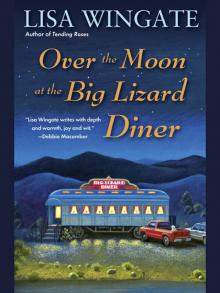 Over the Moon at the Big Lizard Diner
Over the Moon at the Big Lizard Diner Never Say Never
Never Say Never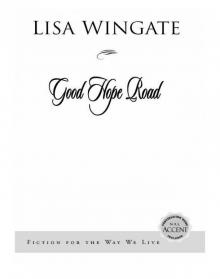 Good Hope Road
Good Hope Road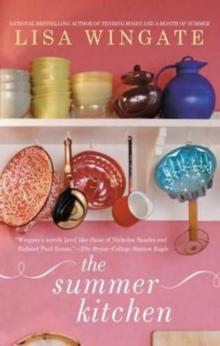 The Summer Kitchen
The Summer Kitchen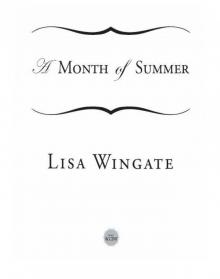 A Month of Summer
A Month of Summer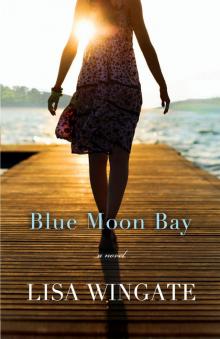 Blue Moon Bay
Blue Moon Bay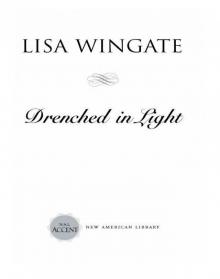 Drenched in Light
Drenched in Light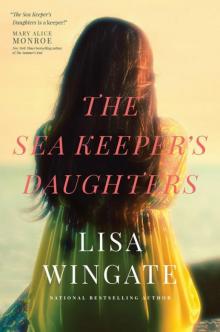 The Sea Keeper's Daughters
The Sea Keeper's Daughters